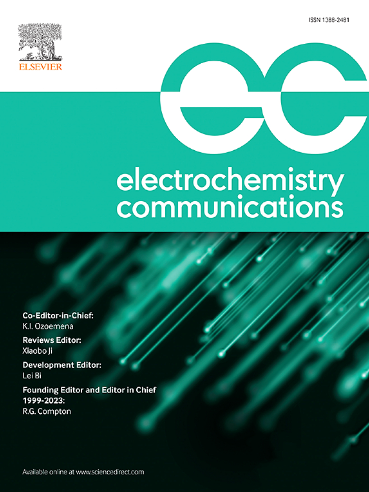Tuning initial pH to decrease salt ion transport in saltwater electrolysis
IF 4.7
3区 工程技术
Q2 ELECTROCHEMISTRY
引用次数: 0
Abstract
Thin-film composite membranes are being studied as replacements to more expensive ion exchange membranes in saltwater electrolysis for carbon neutral hydrogen production. However, a persistent challenge is transport of salt ions between a contained anolyte and saltwater catholyte rather than water ions (H+, OH−). We used a validated Nernst Planck ion transport model in COMSOL Multiphysics to simulate how the initial electrolyte pH impacts total salt ion transport within the first two hours of electrolysis, when the greatest percentage of salts cross the membrane. At fixed current densities of 10 mA cm−2 and 100 mA cm−2, setting an initial anolyte pH to 0 (rather than using a neutral pH) and catholyte pH of 14 achieved the goal of predominantly transporting water ions across the membrane, thereby accomplishing a substantial reduction in nitrate (substituting for chloride) ion transport. At the lower current density, setting the anolyte pH to 0 while leaving the catholyte pH neutral resulted in the same reduction of nitrate transport, with water ions carrying most of the charge. Thus, simply setting the solution initial conditions can substantially mitigate chloride ion transport from the catholyte to the anolyte, improving the feasibility of using saltwater electrolysis for green hydrogen production.
求助全文
约1分钟内获得全文
求助全文
来源期刊

Electrochemistry Communications
工程技术-电化学
CiteScore
8.50
自引率
3.70%
发文量
160
审稿时长
1.2 months
期刊介绍:
Electrochemistry Communications is an open access journal providing fast dissemination of short communications, full communications and mini reviews covering the whole field of electrochemistry which merit urgent publication. Short communications are limited to a maximum of 20,000 characters (including spaces) while full communications and mini reviews are limited to 25,000 characters (including spaces). Supplementary information is permitted for full communications and mini reviews but not for short communications. We aim to be the fastest journal in electrochemistry for these types of papers.
 求助内容:
求助内容: 应助结果提醒方式:
应助结果提醒方式:


